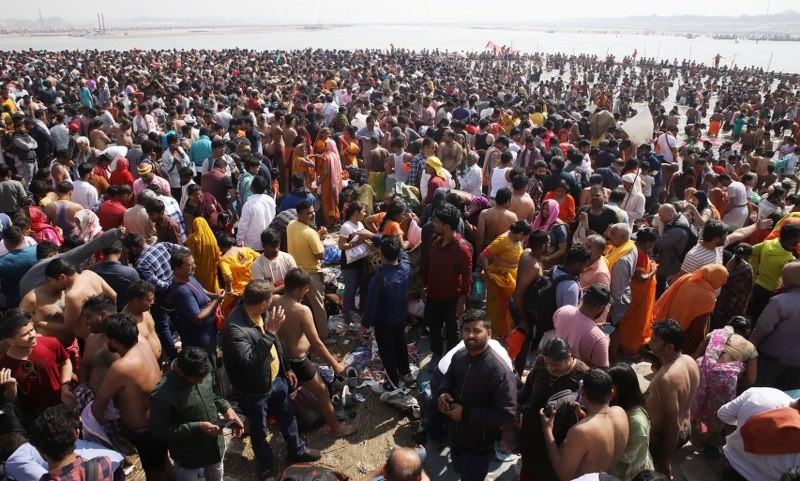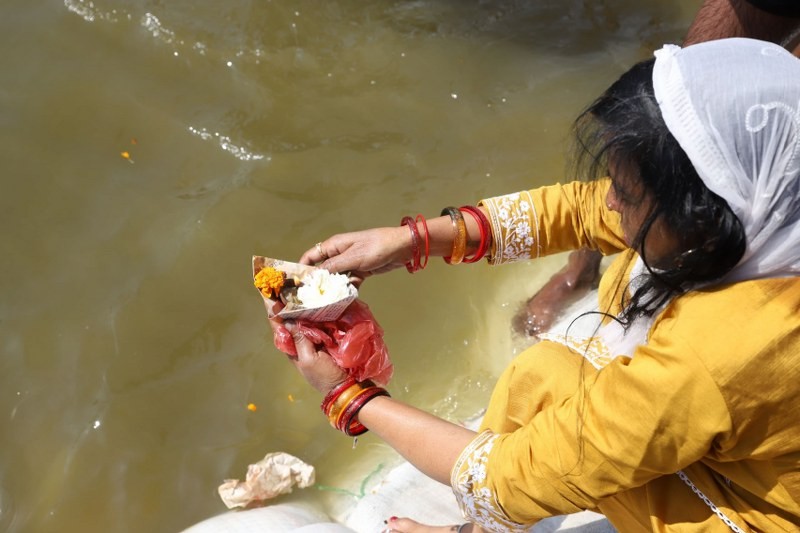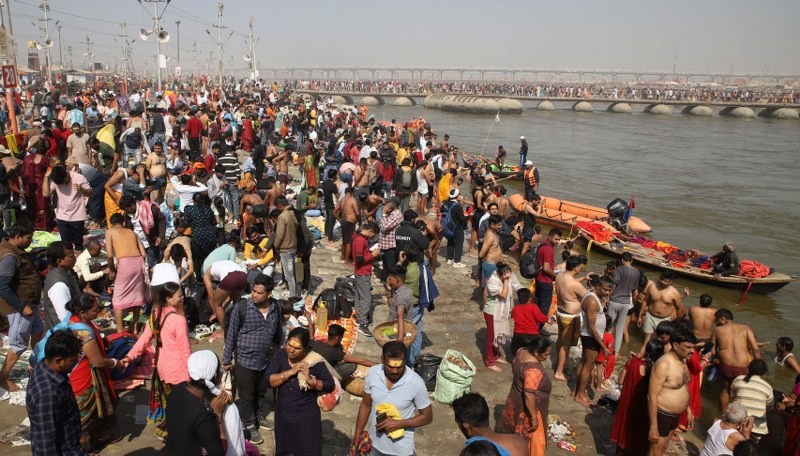 Maha Kumbh
Maha Kumbh
Maha Kumbh in Prayagraj: 450 million devotees took dip in holy Triveni Sangam in past 29 days, announces government
The Maha Kumbh 2025 has become one of the largest religious gatherings in history, with over 450 million (45 crore) devotees participating in the bathing rituals as of February 11, 2025, the Indian government said on Tuesday.
The state government was expecting the number of devotees to reach 45 crore in 45 days but this number has already been achieved within one month, with 15 days still remaining for the Maha Kumbh to conclude.
With its blend of spiritual significance, grand rituals, and cutting-edge technological interventions, this Kumbh Mela has set new benchmarks in crowd management, sanitation, and digital facilitation.
With the number of visitors surpassing 45 crore, crowd management has been a major focus.
The next Amrit Snan is on February 12, 2025, Magh Purnima Snan, which is renowned for its connection with the veneration of Guru Brahaspati and the belief that the Hindu deity Gandharva descends from the heavens to the sacred Sangam.

To ensure smooth crowd management during the Magh Purnima Snan, the state government has
the mela area as a ‘no vehicle zone’ from the morning of February 11, 2025, allowing only essential and emergency services.
Indian Railways is also operating at full capacity to manage the Maha Kumbh 2025 crowd.

On February 9, around 330 trains transported 12.5 lakh pilgrims, with 130 more departing by 3 PM on February 10.
Preparations for the upcoming Amrit Snan on February 12, 2025 were reviewed by the officials and the Union Minister.
All eight stations, including Prayagraj Junction, are fully operational, while Prayagraj Sangam station is temporarily closed around major bathing dates for crowd management.
The state government, in collaboration with various agencies, implemented a multi-tier security and monitoring system.
A network of AI-powered CCTV cameras, drone surveillance, and real-time analytics ensured the safe movement of pilgrims across designated sectors.
The administration also introduced a digital token system to streamline access to bathing ghats, reducing overcrowding.
Special provisions were made for senior citizens and differently-abled devotees, ensuring that the Kumbh remained an inclusive spiritual experience.
Adding to the historical significance of Maha Kumbh 2025, the honourable President of India, Droupadi Murmu participated in the religious festivities on February 10, 2025. Her visit included a sacred dip at the Triveni Sangam, reinforcing the event’s spiritual importance at the highest levels of governance.
The President also paid homage at key religious sites, and interacted with saints and devotees.
Apart from President Murmu, several union ministers, chief ministers, and governors, including Prime Minister Narendra Modi, Home Minister Amit Shah, Defence Minister Rajnath Singh have also taken a holy dip in the Sangam.
Celebrities from Bollywood and the Indian sports fraternity have also marked their presence, engaging in religious rituals and public interactions. The participation of revered saints and spiritual leaders has further amplified the sanctity and grandeur of the event.
Kalpavas, a period of fasting and spiritual discipline, holds deep significance during Maha Kumbh. This year, over 10 lakh devotees observed Kalpavas at the Triveni Sangam, concluding on Magh Purnima, with a final holy dip, pujan, and daan.
As per tradition, Kalpvasis will perform Satyanarayan Katha, Havan Puja, and offer donations to their Tirthpurohits.
The barley sown at the start of Kalpavas is immersed in the Ganga, and the Tulsi plant is taken home as a divine blessing.
The twelve-year Kalpavas cycle culminates in Maha Kumbh, followed by a community feast in their villages.
Over 7 lakh pilgrims have received medical care through extensive healthcare services. This includes treatment of more than 4.5 lakh individuals at 23 allopathic hospitals, with over 3.71 lakh undergoing pathology tests, and the successful completion of 3,800 minor and 12 major surgeries.
Additionally, 20 AYUSH hospitals have provided Ayurveda, Homeopathy, and Naturopathy treatments to over 2.18 lakh pilgrims.
The integration of specialists from AIIMS Delhi, IMS BHU, and international experts from Canada, Germany, and Russia has ensured world-class healthcare.
Services such as Panchakarma, yoga therapy, and the distribution of health awareness materials have been well-received, enhancing the overall well-being of attendees.
Aiming to make this the cleanest Kumbh Mela ever, authorities have enforced a stringent waste management plan. Over 22,000 sanitation workers have been deployed, ensuring that the premises remain free of litter.
A large-scale water treatment initiative has also been implemented to keep the river water clean and suitable for the sacred dips. Eco-friendly practices, such as banning plastic and using biodegradable cutlery, have been strictly enforced.
The Swachh Bharat Mission’s influence is evident in the installation of thousands of bio-toilets and automated garbage disposal units across the Kumbh grounds.
Throughout the event, cultural programs featuring classical dance performances, folk music, and spiritual discourses take center stage, captivating devotees and visitors alike.
Renowned artists, including Padma awardees and folk troupes from various states, showcase the diverse traditions of India through Kathak, Bharatanatyam, and traditional folk dances like Lavani and Bihu.
The Kumbh Mela is also hosting various literary gatherings, where scholars discuss ancient scriptures, Vedic philosophy, and the relevance of Sanatan Dharma in contemporary times. Artisans set up stalls displaying handicrafts, handloom products, and religious artifacts, turning the mela into a vibrant cultural confluence.
Maha Kumbh 2025 is not just a religious gathering; it is a monumental example of meticulous planning, cultural preservation, and technological innovation.
With over 45 crore devotees already participating and more expected before its conclusion, this Kumbh stands as a testament to India's ability to blend tradition with modernity, ensuring a spiritually enriching and seamless experience for all.
Support Our Journalism
We cannot do without you.. your contribution supports unbiased journalism
IBNS is not driven by any ism- not wokeism, not racism, not skewed secularism, not hyper right-wing or left liberal ideals, nor by any hardline religious beliefs or hyper nationalism. We want to serve you good old objective news, as they are. We do not judge or preach. We let people decide for themselves. We only try to present factual and well-sourced news.







